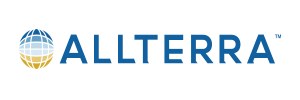How to Choose the Right GNSS Tools for the Greatest Productivity
This is blog 1 in the series “Real-Time GNSS Corrections: Productivity, Profitability, and Practical Considerations”, written by Jason Evans, Portfolio Manager, Trimble Positioning Services, NYS Registered & Licensed Land Surveyor. The blog series discusses important considerations for your GNSS surveying workflows: When should you use a base station? Are you missing the opportunity to gain productivity by including correction services in your workflows? Can differential base-rover RTK benefit from correction services? Reading the full series will not only help you to answer these questions, it will enable you to calculate the cost savings of a real-time GNSS correction subscription.
The ubiquity of real-time networks and globally available GNSS correction services herald a new era where traditional base-rover workflows may not be part of the surveyor’s daily work as they once were. There are many situations where differential real-time kinematics (RTK) using a base-rover pair of GNSS receivers may be the best—or only—choice. However, many surveyors have already realized, such instances are becoming fewer, and the alternatives can bring additional time and cost savings. There have been great advances in alternatives to base-rover workflows—networks and correction services—but also in high-precision GNSS technology overall. If you haven’t already “gone baseless,” now might be the right time to visit the idea.
The Legacy
In the early days of GPS-only, high precision came with a premium on time. For instance, in the pre real-time era, where postprocessing was the only option, workflows involved many steps—and a lot of waiting; waiting for enough satellites to be in view, waiting for hours of observations, waiting hours or days to do additional sets of long observations, waiting for hours while static data files trickled through a serial cable, waiting days for precise ephemeris availability for download, and waiting to be back in the office to process and adjust. Despite the time required, GPS was an improvement over legacy terrestrial surveying workflows. Then along came real-time differential (DGPS), and real-time kinematics (RTK) with on-the-fly (OTF) initialization giving surveyors and mappers many more options such as those discussed by Gavin Schrock in his article “GPS/GNSS Corrections: The Right One for Your Needs”1.





